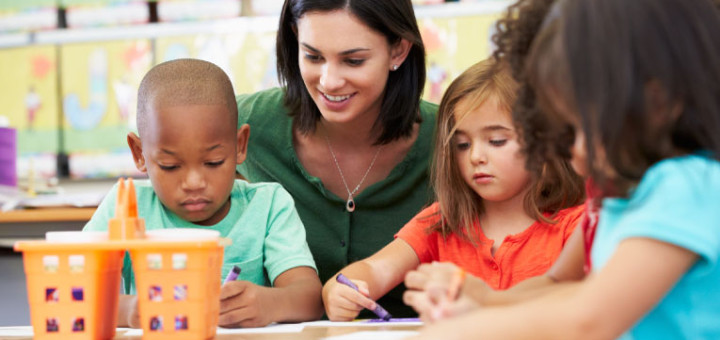“Each child is unique and the protagonist of his or her own growth.”
–Loris Malaguzzi, developer of the Reggio Emilia approach
In the world of early childhood education, there are many different philosophies, teaching strategies and beliefs regarding how children learn best. For those of us at the OFJCC Leslie Family Preschool, we have spent years experimenting with the educational philosophy of Reggio Emilia developed after World War ll in the Italian town of Reggio Emilia by Loris Malaguzzi. Malaguzzi strongly believed that children are competent and capable individuals with a desire to learn and create through hands-on experiences.
So, what does that look like in the classroom? It all starts with a research question. Before the school year even begins and the children arrive, the educators in the classrooms have already chosen a question that will help guide them when setting up their environments and co-constructing a meaningful curriculum with the children. Every classroom has a different question, a different goal, a different intention, a different look and a different experience all led by the children’s needs and desires as well as the educator’s observations and inquiries.
If you were to visit our Irit classroom for two-year-olds, you would see that the teachers Susan, Marissa and Pallavi have already assessed and adjusted the classroom based on their observations. Pallavi Rana observed:
“When conducting home visits before school started, we immediately observed that 10–14 of our families have multicultural backgrounds and many moved to the U.S. within the last year. More than half our families’ home language is a language other than English, and many wish to preserve the children’s knowledge of their home language.
“While a few children share a common home language, we have observed that some have also opted to communicate without words and instead with body and hand gestures, especially their eyes.
“Therefore, our research question became:
How do a child’s earliest forms of communication and cultural background influence his or her ability to participate in social interactions and how do these interactions in turn support further social development?
Pallavi continues, “One example we found was when Seamus, a child in class, saw that a friend from a neighboring classroom was struggling to move a tire back to its usual resting spot. This child was not asking for help, but the struggle was evident in his movements, body language and the fact that the tire wouldn’t move. Seeing his friend struggle, Seamus ran over to help him without any prompting from the teachers, and no words were exchanged between the two boys as together they pushed the tire to its spot. We can only assume that Seamus was reading the body language and cues from his friend and his reaction was to help. This is all part of the process of linguistic and social development.
“Using the research question as our guide, we use our observations and inquiries to better understand the children’s home life and help them build relationships with their peers, ultimately allowing them to solve problems independently, communicate positively and verbally articulate their ideas,” she explains.
As with all of our classrooms, we do not have the answer to the educators’ research question. We don’t yet know what the outcome will be, how the children’s learning will evolve, how they will explore or even what other questions and observations will emerge during the year.
But what we do know is that the research question is our jumping off point and that the journey ahead will be filled with deep, intentional learning experiences for the children, educators and families alike. And with that, we know it’s going to be an amazing year.







Comments are moderated and will not appear immediately.